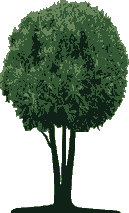Translate this page:
Summary
Bloom Color: Yellow. Main Bloom Time: Early summer, Late summer, Mid summer. Form: Rounded, Vase.
Physical Characteristics

 Koelreuteria paniculata is a deciduous Tree growing to 10 m (32ft) by 10 m (32ft) at a fast rate.
Koelreuteria paniculata is a deciduous Tree growing to 10 m (32ft) by 10 m (32ft) at a fast rate.
See above for USDA hardiness. It is hardy to UK zone 6 and is not frost tender. It is in flower from July to August, and the seeds ripen from September to October. The species is hermaphrodite (has both male and female organs) and is pollinated by Bees.
It is noted for attracting wildlife.
Suitable for: light (sandy), medium (loamy) and heavy (clay) soils and can grow in nutritionally poor soil. Suitable pH: mildly acid, neutral and basic (mildly alkaline) soils. It cannot grow in the shade. It prefers dry or moist soil. The plant can tolerates strong winds but not maritime exposure.
It can tolerate atmospheric pollution.
UK Hardiness Map
US Hardiness Map
Synonyms
Plant Habitats
Woodland Garden Secondary; Sunny Edge;
Edible Uses
Edible Parts: Leaves Seed Shoots
Edible Uses:
Berries - roasted[2, 177]. Leaves and young shoots - cooked[2, 105, 177, 179].
References More on Edible Uses
Medicinal Uses
Plants For A Future can not take any responsibility for any adverse effects from the use of plants. Always seek advice from a professional before using a plant medicinally.
Ophthalmic
The flowers are ophthalmic[178, 218]. They are used in the treatment of conjunctivitis and epiphora[218].
References More on Medicinal Uses
The Bookshop: Edible Plant Books
Our Latest books on Perennial Plants For Food Forests and Permaculture Gardens in paperback or digital formats.

Edible Tropical Plants
Food Forest Plants for Hotter Conditions: 250+ Plants For Tropical Food Forests & Permaculture Gardens.
More

Edible Temperate Plants
Plants for Your Food Forest: 500 Plants for Temperate Food Forests & Permaculture Gardens.
More

More Books
PFAF have eight books available in paperback and digital formats. Browse the shop for more information.
Shop Now
Other Uses
Beads Dye
A yellow dye is obtained from the flowers.[46, 61, 178]. A black dye is obtained from the leaves[178]. The seeds are used as beads in necklaces etc[46, 61, 178].
Special Uses
Attracts Wildlife
References More on Other Uses
Cultivation details
Landscape Uses:Pest tolerant, Specimen. Succeeds in any good loamy soil[1, 11] and in dry soils. Prefers a sunny sheltered position[1, 11]. A wind resistant plant, but it does not like salt-laden winds[200]. Tolerates atmospheric pollution[200]. This species is hardy to about -10°c when fully dormant[200], though the young growth in spring can be damaged by late frosts. Grows best in areas with long hot summers, it is fast growing in such conditions[200]. A short-lived tree[11]. A good bee plant[108]. Plants are susceptible to coral spot fungus, especially if the wood is not properly ripened due to insufficient summer heat[11]. This species is notably resistant to honey fungus[200]. Special Features:
Not North American native, Blooms are very showy.
References Carbon Farming Information and Carbon Sequestration Information
Temperature Converter
Type a value in the Celsius field to convert the value to Fahrenheit:
Fahrenheit:
The PFAF Bookshop
Plants For A Future have a number of books available in paperback and digital form. Book titles include Edible Plants, Edible Perennials, Edible Trees,Edible Shrubs, Woodland Gardening, and Temperate Food Forest Plants. Our new book is Food Forest Plants For Hotter Conditions (Tropical and Sub-Tropical).
Shop Now
Plant Propagation
The seed requires a period of cold stratification. It is probably best sown as soon as it is ripe in a cold frame[200]. Pre-soak stored seed for 24 hours in warm water. If it swells up then sow it in a cold frame. If it does not swell then soak it for a further 24 hours in hot water prior to sowing. This should cause the seed to swell but, should this fail, scarification (taking care not to damage the seed embryo) followed by a further 24 hours in warm water should do the trick[80]. Germination is usually good[78], though the seedlings are very variable[200]. When they are large enough to handle, prick the seedlings out into individual pots and grow them on in the greenhouse for at least their first winter. Plant them out into their permanent positions in late spring or early summer, after the last expected frosts. Consider giving the plants some protection from the cold for their first winter outdoors[78]. Root cuttings, 4cm taken in December. Plant horizontally in individual pots in a warm greenhouse[78].
Other Names
If available other names are mentioned here
Native Range
TEMPERATE ASIA: China (Anhui Sheng, Gansu Sheng, Hebei Sheng, Henan Sheng, Hubei Sheng, Jiangsu Sheng, Liaoning Sheng, Shaanxi Sheng, Shandong Sheng, Shanxi Sheng, Sichuan Sheng, Yunnan Sheng, Zhejiang Sheng)
Weed Potential
Right plant wrong place. We are currently updating this section.
Please note that a plant may be invasive in one area but may not in your area so it's worth checking.
Conservation Status
IUCN Red List of Threatened Plants Status :

Growth: S = slow M = medium F = fast. Soil: L = light (sandy) M = medium H = heavy (clay). pH: A = acid N = neutral B = basic (alkaline). Shade: F = full shade S = semi-shade N = no shade. Moisture: D = dry M = Moist We = wet Wa = water.
Now available:
Food Forest Plants for Mediterranean Conditions
350+ Perennial Plants For Mediterranean and Drier Food Forests and Permaculture Gardens.
[Paperback and eBook]
This is the third in Plants For A Future's series of plant guides for food forests tailored to
specific climate zones. Following volumes on temperate and tropical ecosystems, this book focuses
on species suited to Mediterranean conditions—regions with hot, dry summers and cool, wet winters,
often facing the added challenge of climate change.
Read More
Expert comment
Author
Laxm.
Botanical References
11200
Links / References
For a list of references used on this page please go here
Readers comment